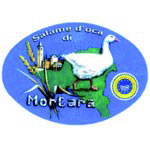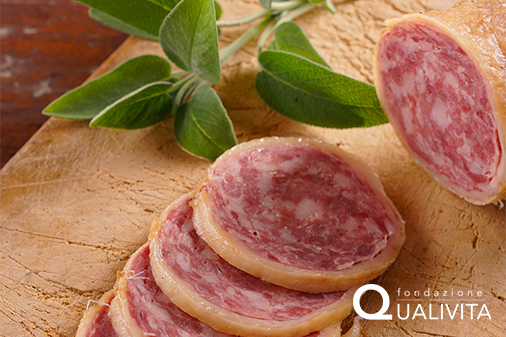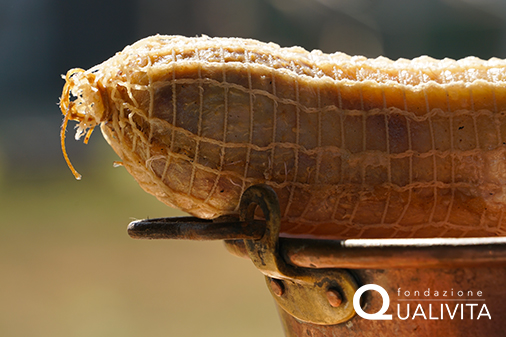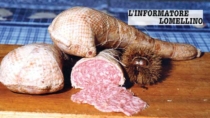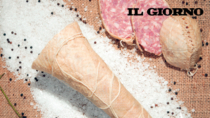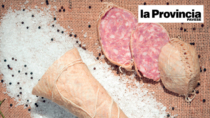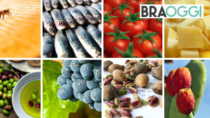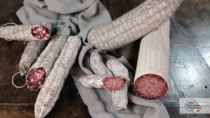Description
Salame d’Oca di Mortara PGI is a cooked charcuterie product stuffed in goose skin, made of goose meat minced with lean meat and pork fat, kneaded together to form a solid, homogenous and compact mixture.
Production Area
The production area of Salame d’Oca di Mortara PGI is the municipalities of Lomellina, an area in the Province of Pavia, in the Lombardy region. The animals used for production must be born, raised and slaughtered in the regions of Lombardy, Piedmont, Emilia-Romagna, Veneto and Friuli Venezia Giulia, as well as: the autonomous Province of Trento, only for the geese; and the regions of Abruzzo, The Marches, Lazio, Molise, Tuscany and Umbria, only for the pigs.
Production Method
During the last three months of their lives, the geese are only fed green forage and grains. The goose meat and pork are minced using a mincer with 8-10 mm holes, after which the mixture is seasoned with sea salt, pepper and various fresh herbs. The mince is inserted into goose skin, which is salted, trimmed and sewn shut. The salami is pierced, tied and left to dry for 1-3 days in ventilated environments with temperatures varying from 14 to 18°C. Finally, it is cooked in boilers at an average temperature of 80°C and then left to cool.
Appearance and Flavour
Salame d’Oca di Mortara PGI has a goose-neck or tubular shape, depending on whether the mince was encased in the skin of the goose’s neck or in that of the back or stomach. When cut, the casing should remain attached to the meat. It has a sweet and delicate flavour, characteristic of goose meat, and a subtle, mild fragrance, due to the spices.
History
It is believed that the roots of Salame d’Oca di Mortara PGI lie in the history of the Jewish community in Lomellina and in the land reclamation carried out by the Dukedom of Milan, which made the area particularly suitable for rearing geese. Jewish families were in fact the first to order goose salami and scratching from the local charcutiers. However, sources from local tradition suggest that goose meat on its own was not enough to satisfy the tastes of most of the non-Jewish inhabitants in the area, so several local butchers mixed it with lean and fatty pork. The invention of Salame d’Oca di Mortara as it is known today was however thanks to the creativity of the skilful Mortarese master butchers. Goose salamis are mentioned in local chronicles from the 1780’s, although concrete evidence of the diffusion and sale of this product can only be found in the early 20th century, along with the first official recognitions of the product also being appreciated outside of the Lomellina area, for example the gold medal awarded to Salame d’Oca di Mortara by Master Butcher Carlo Orlandini, at the Second International Exposition in Paris in 1913.
Gastronomy
It is best to keep Salame d’Oca di Mortara PGI in the refrigerator. Once sliced, it should be wrapped in foil. Salame d’Oca di Mortara PGI is delicious on its own or as an ingredient in starters and cold snacks. It can also be served with hot dishes, mashed potatoes and vegetables. It pairs well with mellow, aromatic white wines.
Marketing
The product is marketed as Salame d’Oca di Mortara PGI. It is sold whole or sliced, hermetically sealed or vacuum-packed.
Distinctive Features
Salame d’Oca di Mortara PGI is the result of the fusion of different food cultures: the dietary customs of the Jewish population, which led to the introduction of goose meat, combined with those of the local population, who were accustomed to eating pork salamis.



